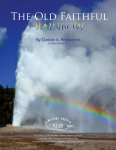Composer's Notes
Portrait of a Clown is in ABA form surrounded by an eight-bar introduction and coda:
Introduction (beginning at measure "1")A (beginning at rehearsal letter "A")
B (beginning at rehearsal letter "D")
A (beginning at rehearsal letter "H")
Coda (beginning at rehearsal letter "K")
The melody in the A section, first appearing in the flutes and oboe, is derived from the first five pitches of the Bb Lydian scale: B flat, C, D, E natural, and F. It should be performed in a bouncy, happy manner, and should always predominate.
The middle section is flowing and melancholy, but without a change in tempo. It contains two melodies, one at letters D, E, and G, and the other at letter F in the clarinets and horns. Both melodies are marked "espressivo," and should always sing through.
The return of the A section at letter H contains three statements of the Lydian melody:
1. with a walking bass in the low woodwinds and low brass;2. with its inversion in the 1st trumpets (at letter I); and
3. with a countermelody in the woodwinds (at letter J).
A brief coda at letter K recalls the introduction, and brings the piece to a close.
The piece was scored in such a way as to permit performances by bands lacking sufficient depth in low woodwinds and low brass; therefore, those band directors who do have enough of these instruments should take great care in not allowing them to overpower the others.
Special thanks to Donald S. George and the University of WisconsinEau Claire Symphony Band, who provided the initial recording of the piece, and to Cheryl Floyd and the Murchison Middle School Matador Band, who gave the work its premier performance at the Murchison Middle School Annual Spring Concert on May 26, 1988 in Austin, Texas.
Frank Ticheli
DinA3 (gedruckt) +20,00 EUR



